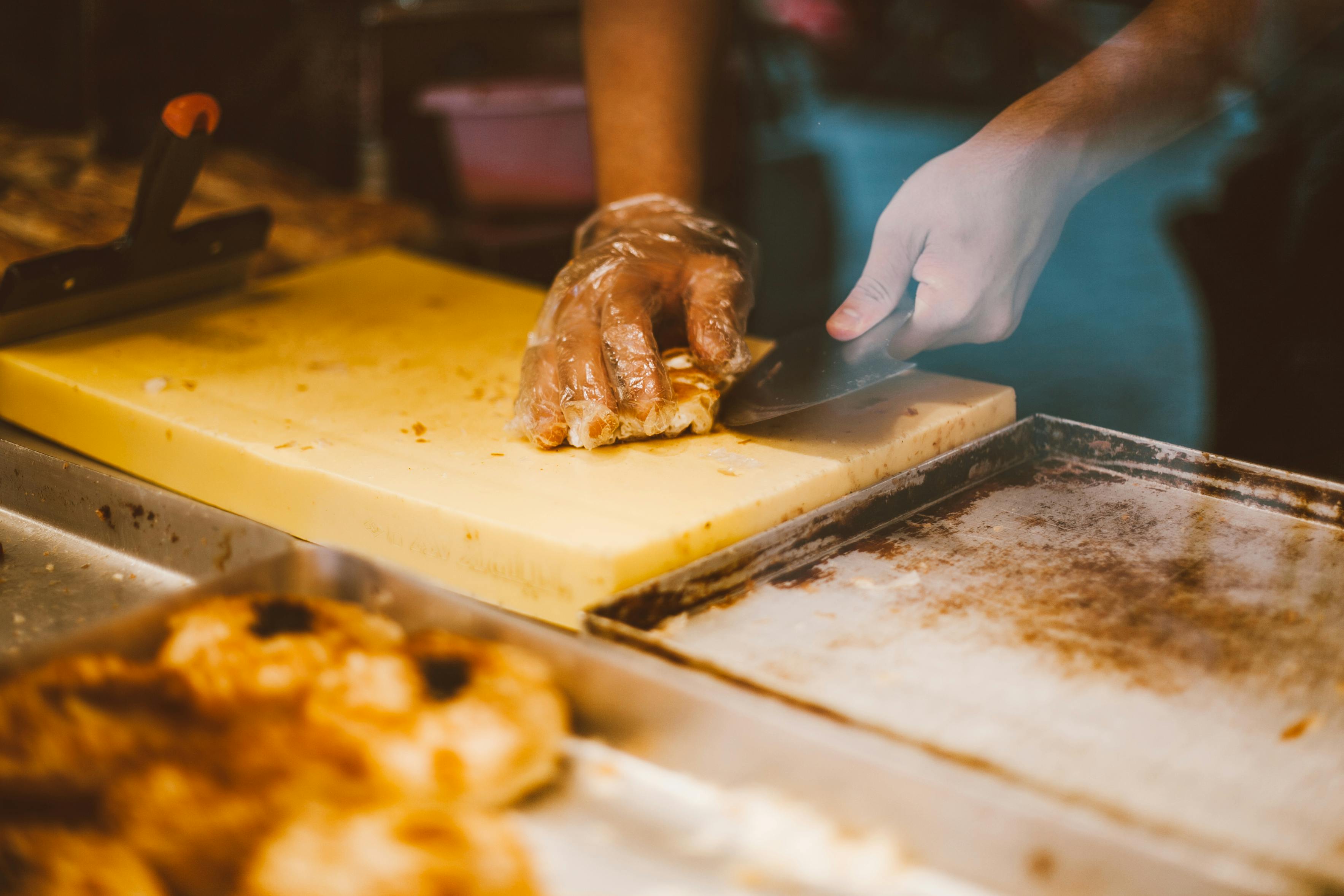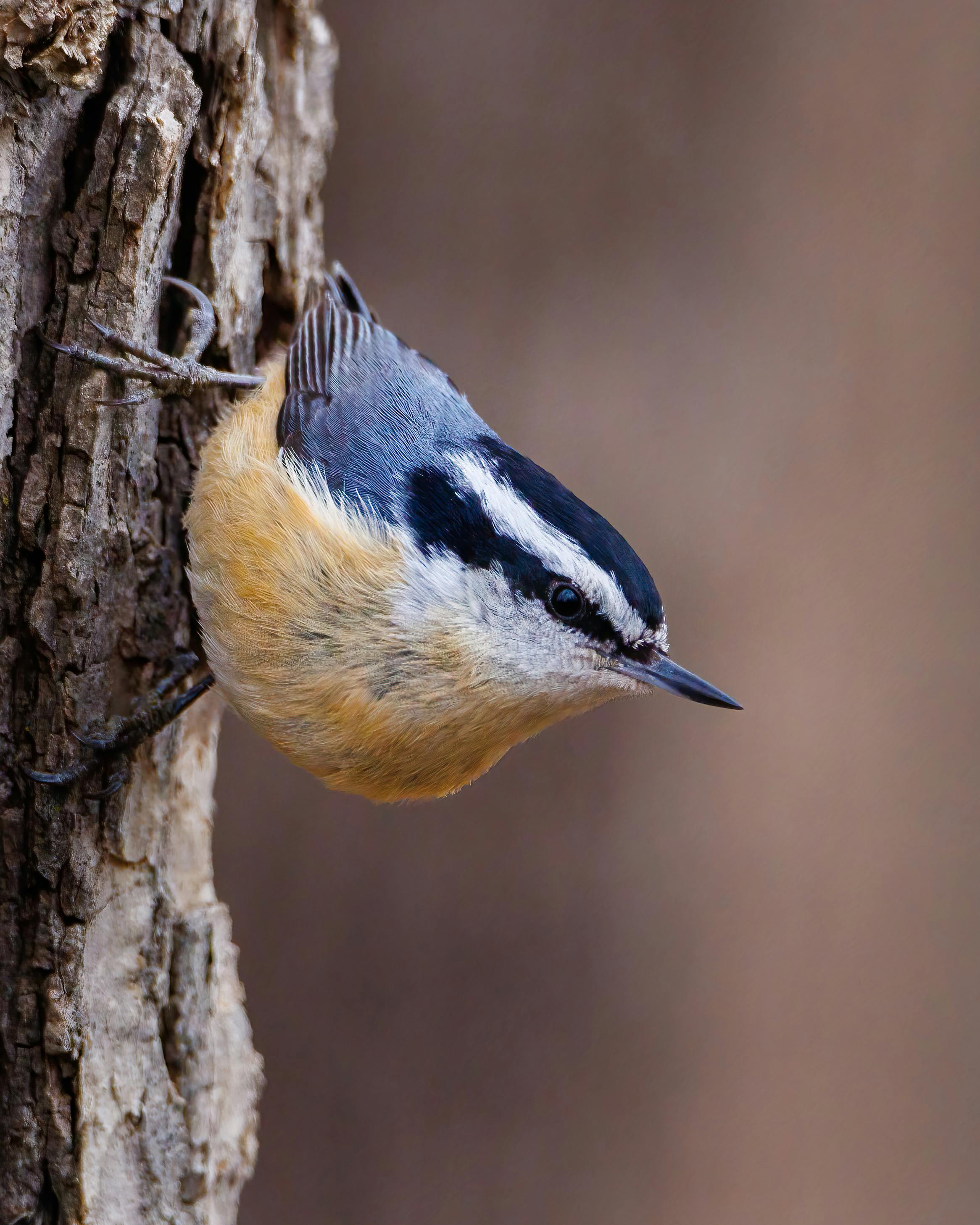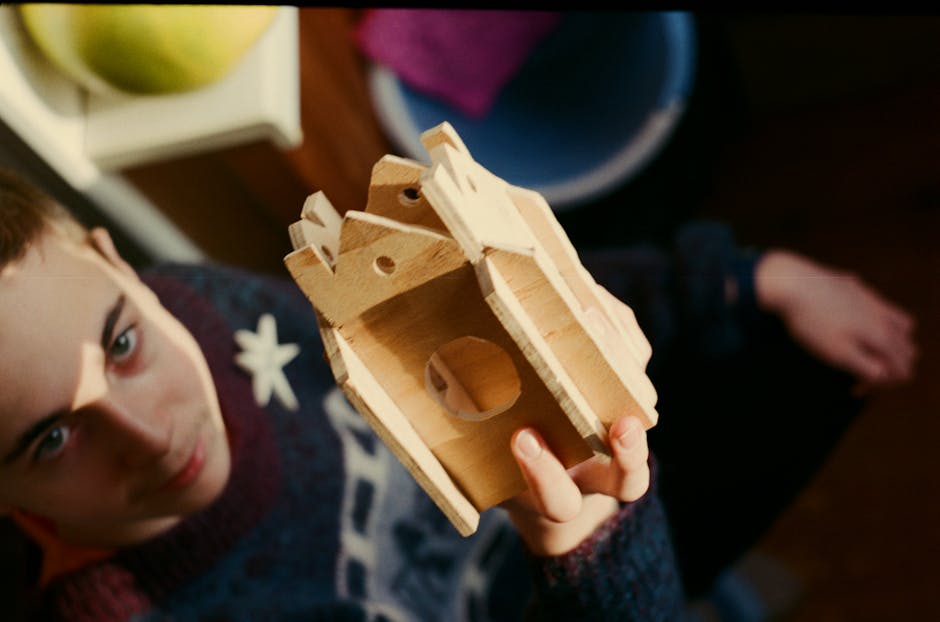Introduction: The Joy of Bird Feeding with Peanut Butter

Discover the captivating world of bird feeding and learn how to create a bird feeder using a beloved pantry staple: peanut butter. Not only is bird feeding a popular hobby that brings joy and beauty to our surroundings, but it also plays a crucial role in supporting bird populations and promoting biodiversity.
Why Peanut Butter?
Peanut butter isn’t just a delicious treat for humans; it’s also a nutritious and enticing food source for birds. It offers a wealth of benefits that make it an excellent choice for creating a bird feeder. It’s readily available, cost-effective, and provides essential nutrients that birds need to thrive.
The Benefits of Bird Feeding
By providing food for our feathered friends, we can make a positive impact on their lives and contribute to the overall health of our ecosystem.
Supporting Bird Populations
Bird feeders serve as a valuable supplemental food source, especially during harsh weather conditions or habitat destruction. By offering birds a reliable food supply, we can help sustain their populations and ensure their survival.
Promoting Biodiversity
Creating a bird-friendly environment in our backyards is an opportunity to promote biodiversity. Attracting a variety of bird species contributes to the overall diversity of our local ecosystem. Different birds have distinct feeding habits and preferences, and providing a diverse range of food options caters to their specific needs.
Enjoying Nature’s Beauty
Bird feeding offers us a chance to connect with nature and experience the beauty of avian life up close. Observing the vibrant colors, graceful flight, and melodious songs of birds can provide a sense of tranquility and wonder, bringing us closer to the natural world.
What This Article Covers
This article will guide you through the process of creating a bird feeder using peanut butter as the main ingredient. We’ll provide a comprehensive list of materials needed, along with step-by-step instructions accompanied by helpful images. Additionally, we’ll offer tips on attracting birds and other wildlife to your feeder, explain the nutritional value of peanut butter for birds, discuss cleaning and maintenance guidelines, and explore alternative uses for your bird feeder.
Embark on this exciting journey of bird feeding and exploration! Whether you’re a seasoned bird enthusiast or new to the world of bird feeding, this guide will equip you with the knowledge and inspiration to create a wonderful bird feeder that will attract a diverse array of feathered visitors to your yard.
What You Need: Materials for Your Bird Feeder
![]()
To create a bird feeder with peanut butter, gather the following materials:
-
Pinecone or other suitable base: Choose a pinecone or another object that can serve as the foundation for your bird feeder. A pinecone works well due to its natural nooks and crannies, perfect for holding the peanut butter and birdseed.
-
Peanut butter: Opt for unsalted, natural peanut butter without added sugars or artificial sweeteners. Birds are attracted to its rich scent and high fat content.
-
Birdseed: Select a high-quality mix that includes sunflower seeds, millet, cracked corn, and peanuts. Ensure the birdseed is fresh and free from mold.
-
Twine or string: Use durable and weather-resistant twine or string to hang the bird feeder once it’s complete.
-
Butter knife or spatula: Spread the peanut butter onto the pinecone or base using a knife or spatula to evenly distribute it throughout the crevices.
-
Mixing bowl: Use a mixing bowl to combine the birdseed with other ingredients, ensuring an even mixture.
-
Optional add-ons: Enhance your bird feeder by including dried fruits, nuts, or suet cakes. These extras attract a wider variety of birds and provide additional nutrients.
Gather these materials, and you’ll have everything you need to create a peanut butter bird feeder that will attract and nourish a diverse array of bird species.
How to Make a Homemade Bird Feeder: A Step-by-Step Guide
![]()
Making a homemade bird feeder is a rewarding and enjoyable activity that can attract a variety of bird species to your yard. Follow these step-by-step instructions to create a delicious pinecone bird feeder coated with peanut butter and birdseed.
Materials Needed
Before you begin, gather the following materials:
- Pinecone
- Peanut butter
- Birdseed
- String or twine
- Small bowl
Step 1: Gather the Materials
Start by gathering all the materials and laying them out on a clean workspace. Having everything within reach will make the process smoother.
Step 2: Tie the String
![]()
Securely tie a length of string or twine around the top of the pinecone, leaving a loop at the top for hanging the feeder later on. Ensure the knot is tight.
Step 3: Prepare the Peanut Butter
Place a small bowl of peanut butter on the workspace. Peanut butter acts as a sticky base for the birdseed, providing a nutritious treat for the birds.
Step 4: Coat the Pinecone with Peanut Butter
Hold the pinecone by the string and spread a thick layer of peanut butter all over it using a spoon or butter knife. Ensure all the crevices and gaps are covered.
Step 5: Pour the Birdseed
Pour birdseed into a separate bowl or plate. Use a variety of birdseed mixes to attract different bird species.
Step 6: Roll the Pinecone in Birdseed
![]()
Roll the peanut butter-coated pinecone in the birdseed, pressing gently to ensure the seeds stick. Continue rolling until the entire surface is covered. This creates an enticing and nutritious coating for the birds.
Step 7: Remove Excess Birdseed and Let It Dry
Gently shake off any excess birdseed from the pinecone. Transfer the bird feeder to a clean surface, such as a wire rack or parchment paper, to dry. Let it dry for at least 24 hours to ensure the peanut butter hardens and the feeder becomes more durable.
Step 8: Find a Suitable Hanging Location
Once the bird feeder is dry, find a suitable location to hang it in your yard. Choose a spot that is easily visible and accessible to birds but protected from harsh weather conditions. Ensure that the feeder is at a height where you can easily observe and refill it.
By following these step-by-step instructions, you can create a delightful bird feeder that will attract various bird species to your outdoor space. Not only will you provide nourishment for these beautiful creatures, but you will also have the opportunity to observe their fascinating behaviors up close. Enjoy the sights and sounds of nature as your homemade bird feeder becomes a popular dining spot for your feathered friends.
Attracting Birds and Other Wildlife to Your Homemade Bird Feeder
![]()
To maximize the number of birds and wildlife visiting your feeder, consider implementing the following tips:
1. Choose the Right Location
-
Quiet and Peaceful Area: Place the feeder away from high human activity and potential predators to provide a sense of safety and security.
-
Strategic Shelter: Birds prefer feeders with nearby trees or shrubs for protective cover.
2. Provide a Water Source
- Birdbath: Place a shallow dish of fresh water near the feeder as a refreshing oasis for visiting birds.
3. Diversify the Food Offerings
-
Seeds: Include a variety of seeds like sunflower, millet, or nyjer to attract a diverse array of birds.
-
Nuts: Add almonds, walnuts, or unsalted peanuts to entice birds that enjoy nutty treats.
-
Fruits: Fresh or dried apples, berries, or raisins can attract fruit-loving species.
-
Suet: Provide suet cakes or blocks made from animal fat mixed with seeds, fruits, or insects for woodpeckers, chickadees, and nuthatches.
4. Optimize Feeder Design
-
Platform Feeder or Tray: Choose a feeder with ample space for birds to perch and feed comfortably.
-
Multiple Feeding Ports or Compartments: Use a feeder that allows several birds to feed simultaneously, attracting a greater variety of species.
5. Regular Feeder Maintenance
-
Cleanliness: Regularly clean the feeder with a mild solution of water and vinegar to prevent the buildup of harmful contaminants.
-
Food Replacement: Remove stale or moldy food promptly and replenish the feeder with fresh offerings.
6. Exercise Patience
Attracting birds and wildlife takes time. Keep the feeder well-stocked, maintain a clean environment, and allow nature to take its course.
Implementing these tips will increase your chances of attracting a diverse range of birds and wildlife to your homemade feeder. Create a welcoming environment with suitable food offerings, water sources, and strategic placement to enjoy the beauty and wonder of nature in your own backyard.
The Benefits of Peanut Butter for Birds: A Nutritional Powerhouse
![]()
Peanut butter is a valuable source of nutrition for birds, offering a host of benefits that support their health and well-being.
Nutritional Value
![]()
Peanut butter is packed with fats, proteins, vitamins, and minerals, making it an excellent energy source for birds. The high-fat content provides the energy needed to sustain their activities, especially during colder months or when food is scarce. Proteins in peanut butter support growth, muscle repair, feather production, and egg formation, ensuring birds stay healthy and vibrant.
Versatile and Attractive
Peanut butter’s versatility makes it a fantastic addition to bird feeders. You can easily mix it with other bird-friendly ingredients like seeds, nuts, or dried fruits to create a nutritious and enticing blend. The aroma and taste of peanut butter are highly appealing to many bird species, making it an excellent choice for attracting a diverse range of birds to your feeder.
Accessibility and Affordability
![]()
Peanut butter is readily available and affordable, making it a convenient option for bird enthusiasts. You can find it in grocery stores or specialized bird supply shops, ensuring you can consistently offer this nutritious treat to the birds in your area.
Important Considerations
When using peanut butter in bird feeders, choose unsalted and unsweetened varieties to avoid harmful additives. Be cautious of peanut butter products containing xylitol, which is toxic to birds. It’s also important to offer peanut butter in moderation alongside a variety of other bird foods to ensure a balanced diet and prevent over-reliance on a single food source. Regularly monitor and clean your feeder, replenishing the peanut butter as needed.
By incorporating peanut butter into your bird feeder, you provide a delicious and nutritious food source while attracting a wide range of bird species to your backyard. Observing these beautiful creatures enjoying the benefits of peanut butter is a rewarding experience for bird enthusiasts and nature lovers alike.
Cleaning and Maintenance: Guidelines for a Healthy Bird Feeder
![]()
To maintain a healthy environment for the birds that visit your feeder, regular cleaning and maintenance are essential. Follow these guidelines to keep your bird feeder in good condition:
1. Remove Remaining Food and Seeds
Start by removing any leftover food or seeds to prevent the accumulation of spoiled or moldy food that can harm birds. Dispose of the old food properly to avoid attracting pests or spreading diseases.
2. Disassemble for Thorough Cleaning
If necessary, disassemble the feeder according to the manufacturer’s instructions. Some feeders have removable parts that make cleaning easier and more effective.
3. Clean with Warm, Soapy Water

Use warm, soapy water and a scrub brush to clean the feeder. Gently scrub all surfaces, paying attention to crevices, corners, and feeding ports where dirt and bacteria can gather. Avoid using harsh chemicals or detergents that can harm birds.
4. Reach Difficult Areas
For narrow feeding ports or tight corners, use a small brush or toothbrush to remove stubborn dirt or grime.
5. Rinse Thoroughly
After cleaning, rinse the feeder with clean water to remove any soap residue. Ensure all traces of soap are washed away, as it can be harmful if ingested by birds.
6. Allow for Proper Drying
Place the feeder in a well-ventilated area to dry completely before refilling it with fresh food. Moisture promotes mold and bacteria growth, which can harm birds.
7. Inspect for Damage or Wear
While cleaning, check for cracks, loose fittings, or any other issues that could compromise the feeder’s integrity. Replace broken parts or repair loose fittings to ensure the feeder is safe and functional.
8. Clean the Bird Feeding Area
![]()
Maintain a clean feeding area by removing spilled seeds or debris on the ground around the feeder. This minimizes the risk of attracting unwanted pests.
9. Establish a Cleaning Schedule
Regularly monitor the feeder’s condition and establish a cleaning schedule. Clean the feeder at least once every two weeks, or more frequently if needed, to prevent dirt buildup and potential health hazards for birds.
By following these cleaning and maintenance guidelines, you can create a safe and inviting space for birds to enjoy. Regular cleaning promotes the birds’ well-being and allows you to observe them in a healthy environment.
Repurposing Your Bird Feeder: Transforming it into a Planter

Give your bird feeder a new lease on life by repurposing it into a beautiful planter. Not only does this add creativity to your garden, but it also promotes sustainability by upcycling. Here’s a step-by-step guide:
Cleaning and Preparation
Thoroughly clean the bird feeder to remove debris and remnants of birdseed. Use warm, soapy water to wash it, scrub away stubborn dirt, rinse, and let it dry completely.
Assessing the Design
Examine the feeder’s design and structure. Some feeders have a removable tray, while others require modifications.
Utilizing a Removable Tray
If your feeder has a removable tray, use it as a small planter. Fill it with suitable potting soil and choose plants like succulents, herbs, or small flowers. Arrange the plants, water gently, and place the tray back into the feeder.
Creating a Planting Area
For feeders without a removable tray, create a planting area by adding drainage holes to the bottom. Line the bottom with small stones or gravel for proper drainage. Fill the feeder with potting soil, considering its size and shape. Choose plants that fit the available space, including trailing plants that cascade down the sides.
Maintaining Your Planter
Regularly water the plants, ensuring the soil remains moist but not saturated. Trim or prune as needed for a neat appearance. Check for pests or diseases and take appropriate measures.
Enjoying Your Repurposed Planter
Admire the beauty of your transformed feeder, attracting attention from visitors and wildlife. Embrace the satisfaction of repurposing and contributing to a sustainable environment.
Conclusion
![]()
Repurposing your bird feeder as a planter offers a creative and eco-friendly alternative. Enjoy gardening while reducing waste. Consider other alternative uses for your feeder and let your imagination soar as you explore the possibilities.
Frequently Asked Questions
FAQ
1. Can I use any type of peanut butter for making a bird feeder?
It is best to use unsalted, natural peanut butter without added sugars or artificial sweeteners when making a bird feeder. Avoid peanut butter products containing xylitol, as it is toxic to birds.
2. What type of birdseed should I use for my peanut butter bird feeder?
Select a high-quality birdseed mix that includes sunflower seeds, millet, cracked corn, and peanuts. Ensure the birdseed is fresh and free from mold.
3. How often should I clean my bird feeder?
It is recommended to clean your bird feeder at least once every two weeks to prevent dirt buildup and potential health hazards for birds. Regular cleaning promotes the birds‘ well-being and allows you to observe them in a healthy environment.
4. Where should I hang my homemade bird feeder?
Choose a suitable location in your yard for hanging the bird feeder. Place it away from high human activity and potential predators, providing a sense of safety and security for the birds. Consider having nearby trees or shrubs for protective cover.
5. How long does it take for peanut butter bird feeders to dry?
After coating the pinecone with peanut butter and birdseed, let the bird feeder dry for at least 24 hours. This allows the peanut butter to harden and the feeder to become more durable.
Leave a Reply